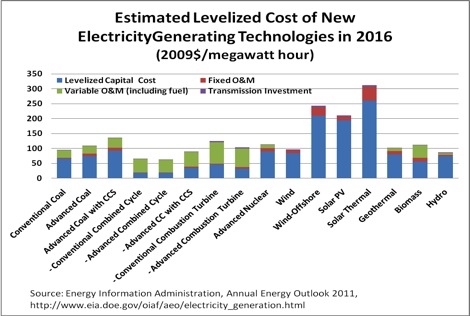So you agree that the transmission costs are high - much higher than land-based transmission - and it is only when electricity prices rise significantly that such becomes feasible on much of any major scale.
That's progress. Now if you'd just stop posturing as though you are disagreeing with me, we'd be all done. I guess you've probably forgotten what point I am actually arguing in your haste to disagree and assert superiority, as usual?
Nope.
The point is that Geo generation on Iceland remains cheap while the cost of other forms goes up and so it's worth the cost to transport it long distances.
But the cost of transmission can't be an order of magnitude greater than it is today (your assertion) or it wouldn't be cost effective to do so.
From Trippy's link:
It is shown that: there should be no major difficulties in the manufacture and laying of submarine cables of the length and type necessary for the link; the availability of the connection should be at least equal to that of a new coal or nuclear plant; and the cost of energy delivered would be very competitive with that from new coal or nuclear power stations
So NO, I don't agree with you.
Your speculations to the contrary there aside, you have already been shown that transmission costs are an order of magnitude higher for undersea cables, and implicitly agreed with such just above. So I'm not sure what you're trying to prove with this hand-waving, other than that you're obstinant and combative to the point of incoherence. You really think that ocean-bottom power cables are cheaper than land-based ones?
No, they are more expensive, maybe twice as expensive.
Not ten times as expensive.
That was the issue.
The fact that it takes *decades* to find something lost on the bottom of the sea - something the size of, well, the Titanic - is "totally irrelevant" to the extra difficulties and costs presented by working on the bottom of the ocean?
Yeah.
Not at all related to the issues of laying a cable.
"Remarkably good" for a ship wrecked and sank decades earlier, sure. But not so much for an operational piece of equipment. Microbes have been eating the steel for a while now, and it's expected that the ships will collapse into the seabed in another couple of decades.
All that means is you don't make the cable outer layer out of steel.
So since they weren't planning on doing so it's not an issue.
Note that none of the transAtlantic cables ever deployed remained in service for more than 25 years. Whatever bearing the fate of the Titanic has on this discussion, it certainly does not establish that you can expected equipment on the bottom of the ocean to remain in functional shape for many decades, without repairs.
Actually no.
The technology changed.
But even still, 25 years is a far longer time than one needs to recoup your investment, and when you pull up the cable it is recyclable.
Last edited:

